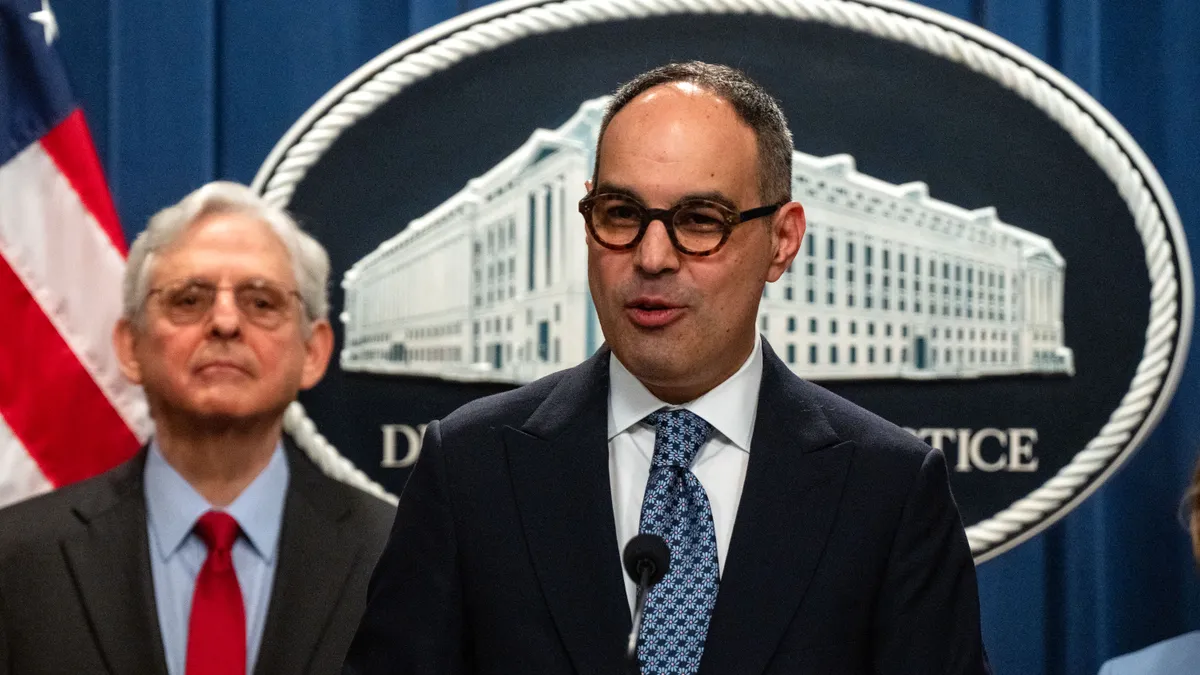Global Payments plans to embark on a “transition year” in 2025, with revenue growth expected to be slower than in subsequent years as the company resets its strategy and pursues possible divestitures.
The Atlanta-based company’s executives outlined the new course during an investor presentation last month, saying revenue was expected to rise by a mid-single digit percentage next year and shift to potentially higher single-digit growth in 2026 and 2027.
“We consider 2025 to be a transition year as we execute on our strategy, streamline and simplify our business, and begin to execute on the operational transformation,” the company’s chief financial officer, Joshua Whipple, said at the Sept. 24 event.
The company is shifting gears after CEO Cameron Bready took the top post in 2023, following the exit of the former CEO, Jeff Sloan. Part of the strategy shift is reorienting some of the company’s 4,000 worldwide sales workers to a new approach and helping partners adjust as well, Bready explained during the presentation.
For the first half of this year, the company reported net income of $712.3 million, more than doubling the $279.8 million reported for that period last year, according to its most recent quarterly filing with the Securities and Exchange Commission. Meanwhile, revenue increased 5% to nearly $5 billion.
Global Payments, which made some 40 acquisitions since 2010, has identified some assets for possible divestitures that could happen this year or next year, the executives said. They didn’t identify those assets, but said they represent about $600 million in annual revenue.
“There probably are some growthier, for lack of a better term, assets that we think don't necessarily fit well strategically around what it is we want to focus on as a business going forward,” Bready said during the presentation. They “represent assets that maybe we want to be able to leverage strategically, but we don't feel like we necessarily have to own it to do that,” he added.
Discussions with potential buyers may be moving along quickly. “We believe some deals are in advanced discussions,” analysts for Deutsche Bank said in an investor note to clients on Sept. 24, after the presentation.
As Global Payments mulls the divestitures, it has also has pared its workforce, with job cuts last month. A spokesperson for the company declined to comment on the worker reduction. The company has about 27,000 employees worldwide, according to the presentation.
Part of its new strategy will include uniting its products and services under the Genius brand, as it seeks to expand its business around the world.
Global Payments has two main divisions, its merchant division, which accounted for three-quarters of its $8.7 billion in adjusted gross revenue last year, and its issuer division, which accounts for the remainder.
The merchant division, in turn, has three units, including point-of-sale and software; integrated and embedded payments; and core payments.
The company expects revenue from its POS and software unit as well as the embedded and integrated payments unit to grow at a faster pace than the core payments unit, according to the presentation. It will lean on those faster-growing units for more expansion, the executives said.
Specifically, it’s focusing on the retail and restaurant POS markets, and delving into certain verticals, including education, healthcare and real estate, they said.
“We're very focused on verticals where there's a strong nexus between payments and software where we can attach higher rates for payments by either owning software or partnering with key software vendors to unlock those opportunities,” Bready said.
Still, the company isn’t seeking to customize its software approach to specific niches. “We're looking for verticals where we can own and invest and amplify that investment more broadly,” Bready said. “We're less open to owning in verticals that require a lot of bespoke investment that's truly only suitable for that specific vertical market.”
For its core payments unit of the merchant division, Global Payments is seeking to expand in Europe, including in Germany and Spain, according to the presentation.
It’s also focused on growing its issuer business footprint internationally. That division is currently largely concentrated in the U.S., the U.K., Ireland and Canada. The company plans to reach into Spain, Brazil and India, among other countries, according to the presentation.


















